The year 2014 was one of extremes for Haruko Obokata. A year of high highs and even lower lows. Barely 30 years old, she was head of her own laboratory at the Riken Center for Developmental Biology (CDB) in Kobe, Japan, and was taking the male-dominated world of stem cell research by storm. She was hailed as a bright new star in the scientific firmament and a national hero. But her glory was short-lived and her fall from grace spectacular, completed in several humiliating stages.
Obokata shot to prominence in January 2014 when she published two breakthrough articles in Nature, one of the world’s top science journals. She and her colleagues had demonstrated a surprisingly simple way of turning ordinary body cells – she used mouse blood cells – into something very much like embryonic stem cells. All you need to do is drop them into a weak bath of citric acid, let them soak for half an hour and – presto! – you have washed away their developmental past. They emerge like cellular infants, able to multiply abundantly and grow into any type of cell in the body, a superpower known as pluripotency. This was a much faster and easier way to reprogram cells than the one pioneered, back in 2006, by another Japanese scientist, Shinya Yamanaka. Moreover, Obokata’s method seemed much less likely to damage the cells or, worse still, make them cancerous.
Because Yamanaka had won a Nobel Prize, journalists wondered whether Obokata would soon get one herself. And because she was a young woman, they also needed to know how she decorated her laboratory (she painted it pink and yellow and stuck cartoons everywhere), what she wore at work (not a lab coat but a cooking apron – a kappogi – which her grandmother had given her) and what she did after hours (fed her pet turtle, took baths, shopped and went on dates).
But Obokata had little time to enjoy success. Within days of her two Nature papers being published, disturbing allegations emerged in science blogs and on Twitter. Some of her images looked doctored, and chunks of her text were lifted from other papers. Riken soon began an investigation and, on 1 April, announced its findings: Obokata was guilty of scientific misconduct.
Public shaming soon followed. The news media, having built her up, was more than happy to tear her down. A tearful Obokata faced a gruelling press conference, broadcast live on TV. Standing amongst a battery of microphones, strobe-lit with camera flashes, she apologised, bowed, answered questions, bowed, apologised some more, and bowed.
Obokata apologised for many things that day. She apologised for “insufficient efforts, ill-preparedness and unskilfulness”, for errors of methodology and sloppy data management. They were all, she said, “benevolent mistakes”, due to her youth and inexperience. But she denied fabricating her results and was shocked that the Riken investigators would say that she “sorely lacks not only a sense of research ethics, but also integrity and humility as a scientific researcher”. Above all, she maintained that her Stap (“stimulus-triggered acquisition of pluripotency”) cells really do exist.
However, the existence of Stap cells grew ever more doubtful. Despite the apparent simplicity of Obokata’s method, no one else was able to make it work. Initially her collaborators stood firmly by her, but one by one they relented and asked Nature to retract the articles. Finally, in June, so too did Obokata. And with the retraction came the most damning piece of evidence yet: genetic analysis showed that the Stap cells didn’t match the mice from which they supposedly came. Through her lawyer, Obokata said she couldn’t understand how that was possible. But the obvious, and rather depressing, explanation is that her so-called Stap cells were just regular embryonic stem cells that someone had taken from a freezer and relabelled.
Some complain that Riken made a scapegoat of Obokata in order to contain the crisis. True, it cleared her senior co-authors of dishonesty; however, it gave them a brutal drubbing for not properly checking her work. Riken also admitted that its whole system of oversight had failed and promptly set about overhauling the CDB from top to bottom, stripping away half of its 500-odd staff, renaming it and installing a new management team.
One of those singled out for criticism was Yoshiki Sasai, deputy director of Riken and Obokata’s supervisor. A well-respected stem cell scientist, Sasai was, in his own words, “overwhelmed with shame”. In early August, after a month in hospital for depression, the 52-year-old committed suicide in a stairwell at a research facility opposite the CDB, leaving behind three farewell notes. The one he addressed to Obokata contained this plea: “Be sure to reproduce Stap cells.”
Indeed, Riken offered Obokata an opportunity to honour Sasai’s dying wish. Rather than fire Obokata, Riken decided to keep her on, allowing her – under very strict supervision – to help a team of researchers reproduce her work. That way, the efforts at verification would not lack Obokata’s expertise and would have the best possible chance of success. In December, however, after eight months of effort, the verification team admitted defeat and Obokata, claiming to be “extremely perplexed” by these results, at long last resigned.
The year ended with Riken’s final report on the matter. It found that Obokata had falsified and fabricated data, that her so-called Stap cells were actually embryonic stem cells, and that the mixup was probably not accidental – though it lacked definitive proof that Obokata had committed this mortal sin of science.
And just like that, Obokata had joined the ranks of some very distinguished biomedical fraudsters.
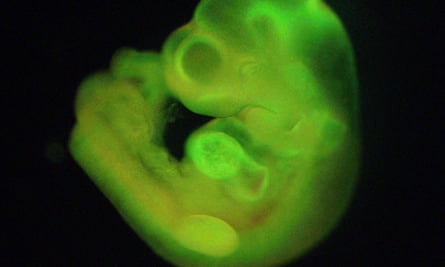
Hwang Woo Suk, for instance. In 2004, this charismatic, square-jawed scientist from Seoul National University became the pride of South Korea when he claimed he had created the first human embryonic stem cells by means of cloning. His smiling face was on the front page of newspapers worldwide, and Koreapost issued a commemorative stamp in his honour. Since cloning is a form of cellular reprogramming, Hwang’s work generated the same kind of excitement as Obokata’s. Both promised the holy grail of regenerative medicine: patient-specific stem cells capable of repairing any damaged tissue or organ in the body. But an investigation by Hwang’s university proved his results were as bogus as Obokata’s. None of his 11 “cloned” stem cells matched their supposed donors.
Over the past century, the “wet lab” (where scientists carry out biological experiments) has seen more than its share of scandal. Indeed, modern cell science emerged from a terrible debacle.
The man in the middle of it all was Alexis Carrel, a brilliant and rather dapper Frenchman working at the Rockefeller Institute in New York. Carrel discovered that, if you remove some cells from the body, sit them in a nutritious broth and handle them correctly, they can not only survive, but thrive and multiply. Also, if you take some cells from one culture, you can start a new one and, with that, a third, and so on. The importance of this technique – know as cell “passaging” – can’t be overstated. With it, Carrel literally opened a new era in cell research. Unfortunately, he did so with an experiment that, while earning him international superstardom, proved to be a complete and utter train wreck.
On 17 January 1912, Carrel removed a chick embryo from its egg and cut out a small fragment of its still-beating heart with the aim of keeping it alive as long as possible. He had hardly begun this experiment when he announced to the world that his chicken heart culture was immortal, that immortality belonged potentially to all cells, and that death was only the consequence of how cells are organised in the body. In other words, the secret of eternal life is within us all, an attribute of our basic biological building blocks. It captured the public’s imagination and was soon accepted by the scientific community.
Carrel and his assistants kept – or claimed they had kept – that culture alive for 34 years, which is five times longer than the average chicken. For many years, around 17 January, journalists wrote birthday stories on the chicken heart and wondered how large it would have grown had Carrel nurtured every one of its ever-multiplying cells. (According to calculations, it swiftly dwarfed the Earth and filled up the entire solar system.)
The problem was, no one else could keep a cell culture alive indefinitely. Lab after lab tried and failed, decade after decade. Because Carrel was a giant in the field of cell research and a Nobel Prize winner, few dared to doubt him. Scientists blamed themselves when their cells died. They assumed that they lacked the master’s skill, that his lab had higher standards than they could reach, that they had somehow exposed their cells to infection or failed to keep them properly nourished. We now know that the reverse was true. Other researchers probably couldn’t duplicate Carrel’s results because they weren’t incompetent or dishonest enough.
It was only in the mid-60s – half a century after Carrel established his chicken heart culture – that the dogma of cell immortality came crashing down. That’s when Leonard Hayflick, an ambitious young researcher at the Wistar Institute in Philadelphia, discovered that ordinary body cells have a finite life span – or, more precisely, an average number of times they can multiply in vitro. This is their Hayflick number. For chickens, it is 35. In other words, a population of chicken cells can double about 35 times before they die, which usually takes several months.
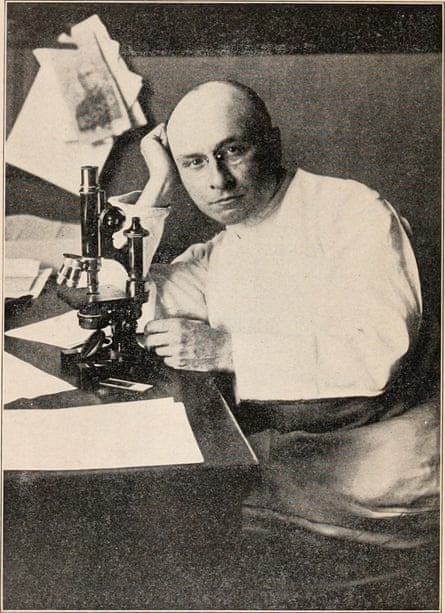
By the time Hayflick proved this, Carrel was long dead and his “immortal” chicken cells discarded. Which means that we know Carrel’s most famous experiment was a sham, but not why. If it was fraud, it was one of the most outrageous cases in the history of science. However, the cause may have been carelessness rather than dishonesty. Carrel and his staff used “embryonic juice” as a culture medium and, if they prepared it badly, it might have contained live chick cells. In that case, instead of just feeding their culture, they re-seeded it. It’s an easy enough mistake, but to make it consistently enough to keep their chicken heart cells alive for 34 years suggests an astonishing degree of negligence.
Reproducibility is one of the cornerstones of modern science. Unless an experiment can be repeated again and again by different researchers, each time yielding similar results, it can’t be said to prove anything much. At least that’s the theory. Carrel’s chicken heart experiment shows how far science can stray from the scientific method. And the fault doesn’t just lie with Carrel and his laboratory. The entire scientific community shares some of the blame because it upheld the dogma of cell immortality for more than 50 years despite the fact that it was based on a single, sensational, irreproducible experiment.
By contrast, the speed of Obokata’s undoing should make us feel more confident about the ability of science to correct itself. As soon as she announced the creation of Stap cells, other researchers tried to make their own and, when they failed, wanted to know why. Without doubt, the standards of cell science have improved since Carrel’s day. Biomedical research is more strictly regulated, and wet lab procedures better established. The internet has also played its part, making it faster and easier for scientists to compare notes and spot errors.
But before we start to congratulate ourselves on the ever-upwards path of science, we should bear in mind that most experiments are never reproduced. There are simply too many of them. Besides which, researchers often don’t have much interest in repeating the work of others. Scientists may be truth-seekers, but they generally prefer new truths. They want to be the first to make a discovery. That’s where all the glory lies; that’s how to get a name for yourself, attract more funding and advance your career. Confirming – or failing to confirm – someone else’s discovery is unlikely to get you very far. It’s unlikely to even get you into print since science journals tend to favour novel research.
Not only are most experiments not reproduced, most are probably not reproducible. This statement will shock only those who have never worked in a wet lab. Those who have will already suspect as much.
A few years ago, Glenn Begley put this suspicion to the test. As head of cancer research for pharmaceutical giant Amgen, he attempted to repeat 53 landmark experiments in that field, important work published in some of the world’s top science journals. To his horror, he and his team managed to confirm only six of them. That’s a meagre 11%. Researchers at Bayer set up a similar trial and were similarly depressed by the results. Out of 67 published studies into the therapeutic potential of various drugs (mostly for the treatment of cancer), they were able to reproduce less than a quarter.
The Amgen and Bayer studies were too small to tell us how bad the problem really is, but they do illustrate something that biomedical researchers already know in their heart of hearts: reproducibility is the exception rather than the rule. There are probably many reasons for this. Apart from outright fraud, there are all those “benevolent mistakes” that scientists make more or less unwittingly: poor experiment design, sloppy data management, bias in the interpretation of facts and inadequate communication of results and methods. Then, of course, there is the devilish complexity of reality itself, which withholds more than it reveals to the prying eyes of science.
All of which should have provided Obokata with plenty of cover. Aside from her lack of “integrity and humility as a scientific researcher”, what did she do wrong? Assuming that she falsified not only her data but the very existence of Stap cells – and it’s difficult to believe otherwise – why didn’t she succeed?
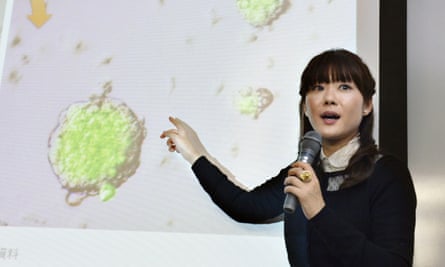
Two obvious reasons spring to mind. First, unbelievable carelessness. Obokata drew suspicion upon her Nature papers by the inept way she manipulated images and plagiarised text. It is often easy to spot such transgressions, and the top science journals are supposed to check for them; but it is also easy enough to hide them. Nature’s editors are scratching their heads wondering how they let themselves be fooled by Obokata’s clumsy tricks. However, we are more surprised that she didn’t try harder to cover her tracks, especially since her whole career was at stake.
Second, hubris. If Obokata hadn’t tried to be a world-beater, chances are her sleights of hand would have gone unnoticed and she would still be looking forward to a long and happy career in science. Experiments usually escape the test of reproducibility unless they prove something particularly important, controversial or commercialisable. Stap cells tick all three of these boxes. Because Obokata claimed such a revolutionary discovery, everyone wanted to know exactly how she had done it and how they could do it themselves. By stepping into the limelight, she exposed her work to greater scrutiny than it could bear.
But perhaps hubris is the wrong term. While some stem cell researchers may indeed possess that “vaulting ambition” characteristic of Shakespeare’s tragic heroes, from what we have read and witnessed firsthand, scientific fraud rarely springs from a heroic, all-or-nothing decision. It is more like a bad habit you acquire, a gentle slope you descend without realising how deep you’re getting.
It all starts with a temptation, one that every scientist faces and to which quite a few succumb. (In anonymous surveys, almost 2% of scientists actually admitted to falsifying data at least once in their careers, and about 14% had witnessed others doing so.)
Imagine it: you have sunk many long hours into your experiment, growing, manipulating and testing cells in various ways, all with a certain hypothesis – a hunch – in mind. You really want to prove that your hunch is right, that the money invested into your work was well spent, and that you aren’t just frittering your life away in a white coat, in a white room, under fluorescent lights. And of course, you want to get ahead in a competitive field, where the pressure to perform can be intense. But you get your results and they are disappointing. You can see straightaway what the data should look like and how, with just a tweak, you can improve them. All you need to do is count something a little creatively, shift a point on a graph or touch up an image. If you get rid of the original data, no one will ever be the wiser. And maybe your hunch is right anyway. Surely it is. You will find more proof – real proof – sooner or later if you just keep looking.
But once you start fiddling with the facts, it’s hard to stop. In part, that’s because you have done some reality-testing and discovered just how easy it is to fool your colleagues. In part, too, you have enjoyed their admiration and your improved chances of being published, promoted and otherwise funded. Maybe you even enjoyed the risk. But things get progressively more complicated. You are now expected to build on your past success, which means adding fiction upon fiction while making sure that the whole contrivance fits neatly together. And as your project thrives, more people will climb on board, and you will have to micromanage their contributions and their perceptions of what is going on. The upside is that their good reputations will lend your work added credibility. The downside is that you will have more eyes peering over your shoulder.
It seems that Obokata was adept at playing this game. She recruited some highly respected figures in the field of cloning and stem cell research and handled them so well that, when questions were first raised about her work, they immediately jumped to her defence, declaring that they had independently verified her work. That is probably what they believed. However, the subsequent investigation revealed that Obokata had always helped her Riken colleagues in their efforts at verification.
And what of Obokata’s US colleagues? More particularly, what of Charles Vacanti, the chief co-author of the now-discredited Stap cell papers?
This charming, silver-haired midwesterner, who headed the anesthesiology department at Brigham and Women’s Hospital in Boston, did almost as much to confuse the issue of replication as Obokata herself. From the start, Vacanti claimed that he had been able to create Stap cells, including human ones, though he offered no evidence. What he did offer, however, was his own special recipe, which he posted online in mid-March (around the time that Riken first declared Obokata guilty of misconduct), assuring the scientific community that if he could make Stap cells, anyone could.
Unfortunately, that humble boast backfired. No one else could get his recipe to work. Many hoped that Vacanti would toil night and day until he proved the existence of Stap cells, but instead, last September, he left Brigham for a year’s sabbatical. Had he lost faith in Stap cells? Apparently not. As a parting gesture, Vacanti posted an improved recipe which, he said, “should increase the likelihood of success”. So far, the new recipe seems no better than the old one.
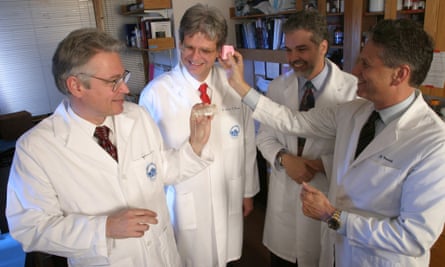
Vacanti’s role in this scientific debacle is especially intriguing because Stap cells originally sprang from his fertile imagination. For well over a decade, he had been working on a hunch that pluripotent stem cells exist in all mammalian tissue, ready to swing into action whenever needed. It was a big, bright, potentially career-defining idea which for a long time Vacanti couldn’t sell. He lacked conclusive proof. He also lacked credibility. After all, he was not a stem cell scientist but an anesthesiologist and tissue engineer best known for grafting an artificial ear on to the back of a mouse (the infamous Vacanti earmouse).
Then, in 2008, Obokata joined his lab as a graduate student, bringing with her the skill set and credentials he sorely needed. Thus began a partnership that continued after Obokata returned to Japan. With her help, Vacanti repeated his earlier experiments and revised his hypothesis: mammalian tissue doesn’t so much maintain a reserve of pluripotent stem cells; it creates them when put under stress by injury or disease. Stap cells were supposed to confirm this hunch, being the laboratory equivalent of stem cells spontaneously produced by the body.
Did Obokata begin cooking data in order to please her supervisor? Did Vacanti ever suspect that her results were too good to be true? Whatever the case, the Stap cell scandal is their monster child.
It makes you wonder why Vacanti hasn’t been dragged over hot coals like Obokata and her Japanese colleagues, and why Brigham hasn’t followed Riken’s example by publicly flogging itself.
The answer is simple: in the US, investigations into scientific misconduct usually take place under a veil of secrecy. In all likelihood, Brigham has begun its own inquiry but, in stark contrast to the one carried out by Riken, we probably won’t learn anything about it – even the fact of its existence – until after a verdict is reached.
The Stap cell case is not yet closed.
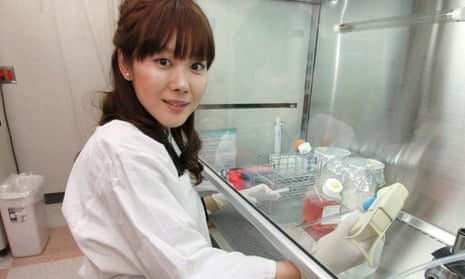
Comments (…)
Sign in or create your Guardian account to join the discussion